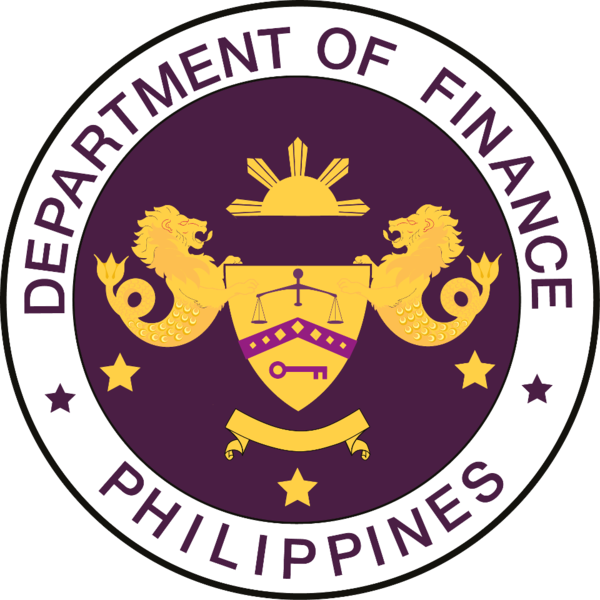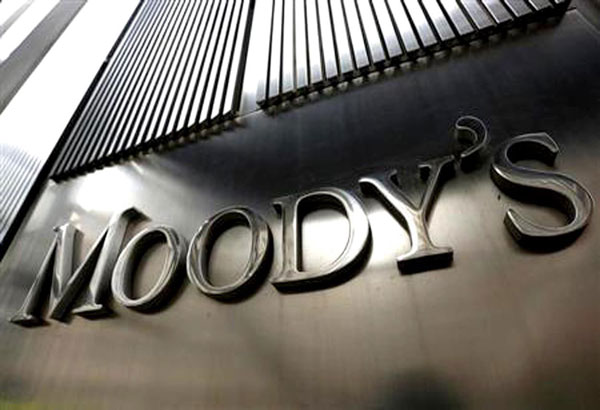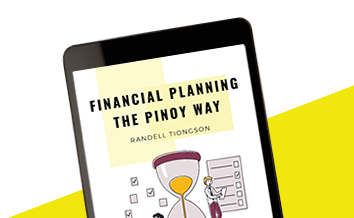7 reasons why the Philippine economic growth is not a bubble in disguise
By Randell Tiongson on November 26th, 2013
A Forbes columnist recently wrote an article that stirred up a hornets’ nest. The post called out the Philippine economic miracle as a bubble in disguise. While the author has some valid points we should not ignore, many of us do not agree. The Philippine economy is the fastest growing economy in Southeast Asia and one of the fastest in the world!
So, is the Philippine economic growth really a bubble in disguise? Our answer is a flat no!
I recently had a conversation with my colleague, economist Dr. Alvin P. Ang who is also the President of the Philippine Economic Society. We both felt that the analysis is rather thin and is not very accurate. Truth to be told, his analysis seems to be delinked from our reality.
Here are 7 good reasons why the Philippine economic growth is not a bubble in disguise:

1. The Philippines has enough guarantees (learning even prior to 1998 Asian Crisis) on RE (real estate) bubbles. Banks are not allowed to lend beyond 25% of their portfolios to real estate. The RE market is clearly differentiated into segments and the large bulk affordable to people is not necessarily facing a bubble.
2. Debt to GDP ratio is now low. Majority of the current debts are long term in nature.
3. Stock market already corrected more or less mirroring GDP growth valuation.
4. Our consumer spending has been growing for years – this is financed largely by OFW remittances.
5. OFW remittances are not coming mostly from the US. Our workers are spread all over the world – this is the reason why the 2009 crisis barely affected remittance growth. Besides, BPOs also has a significant contributing factor and also spreading beyond call centers to higher value added outsourced work. The current account position or the short-term foreign exchange payables are in surplus – a far cry from our situation in the 80s and 90s. Are reserves are now in record high!
6. Car sales are increasing not only due to low interest rates, but also because car prices have become lower relative to total income.
7. We are not having a credit bubble when loans to GDP is only 51% one of the lowest in Asia. Non-Performing Loans (NPL) as % of total loans is at all time low of only 2.7% – suggesting the better quality of loans.
Nonetheless, sustaining the current growth path and avoiding any bubble requires that the country take advantage of the low interest rate regime by shifting to productive activities. The concern is the required structural adjustment to match the need for employment growth.
Furthermore, the rebuilding requirements of the devastated areas will push public spending higher cushioning any potential RE bubbles. There is nothing wrong with government spending for infrastructure, as this is what is needed to sustain the growth. With the rebuilding process, government will not be affected by external interest rate fluctuations as multilaterals like Asian Development Bank and World Bank will lend at concessional rates. This will most likely be followed by ‘bilaterals’.
Finally, it is time for local investors and entrepreneurs to believe in this country and not be swayed by external opinions. After all, we live here. It is only us who can disprove opinions made from outside without coming here and studying the country in detail.
The Department of Finance issued a statement in reaction to the “bubble” article featured in Forbes:
———————————
DOF ECONOMIC BULLETIN
25 November 2013
The Philippine economy is not experiencing a bubble, contrary to a Forbes article on 21 November 2013.
First, the current account in the BOP is in surplus, by 4.2% of GDP in the first half of the year. This implies that the economy has more savings than  investment and is even a net lender to the rest of the world. Compared with the 1997-98 Asian crisis, all ASEAN countries except Singapore then had current account deficits. (Hong Kong and China were also in surplus.)
investment and is even a net lender to the rest of the world. Compared with the 1997-98 Asian crisis, all ASEAN countries except Singapore then had current account deficits. (Hong Kong and China were also in surplus.)
As a result of the robust current account, the country’s international reserves are piling up — rising from US$81.7 billion last year to US$83.4 billion in October 2013, equivalent to a year of imports of goods and services, one of Asia’s highest. Compared with 1997-98, ASEAN reserves were equivalent to 1-2 months of imports and were declining at a fast pace until the IMF stepped in to assist these economies.
Second, the inflation rate is manageable at 2.9% in October 2013 — still within the 3-5% Bangko Sentral target. In 1997, ASEAN economies had an average inflation rate of 6.1% and this rose to 15.1% the next year.
Third, the exchange rate continues to be stable, moving just slightly outside the P41-43/US$ range. The 4.2% peso YOY depreciation in October 2013 is far from the 13.1% and 53.8% ASEAN depreciation in 1997-98.
Fourth, the budget deficit is estimated at 1.2% of GDP as of September 2013 — lower than the targeted 2% of GDP. The 35.8% infrastructure spending in the first half of 2013 is due more to realignment of spending priorities than excessive spending.
The strong BOP and fiscal accounts and low inflation do not indicate that a bubble exists.
Colombo mentions some indicators showing a bubble, as follows:
1. Soaring capital inflows – The capital inflows he is referring to are OFW remittances and BPO revenues which have proven to rise even under the worst economic conditions in the West. Personal remittances of OFWs rose 9.7% last year and 6.6% as of September this year even if Europe was in crisis and US was not growing.
2. External debt spike – External debt of the Philippines has been declining from US$60.4 billion in 2011 to US$60.3 billion in 2012 and US$58.1 billion as of June 2013. As % of GDP, this are equivalent to 27.0%, 24.1% and 21.6%, respectively.
3. FDI has boomed during the last 10 years – We would be happy if this were true. FDI has averaged less than 0.9% of GDP during the past 5 years.
4. PSE has tripled since 2009 – The sharp PSE rise (32% average during the last 5 years) just mirrored the sharp rise in corporations’ net income (28.4% rise).
5. Inflating property bubble – The rise in prices and rentals of residential properties in Manila CBD are not a sign of a bubble but are in fact due to rising demand and low supply. Eventually, prices and rentals will go down as new supply comes onstream. As of 2013 Q2, vacancy rate is 9.8% and 4.3% for residential and office space, respectively. When vacancy rates drop below 10%, prices and rentals rise. It is necessary to keep on building to reduce impact on prices.
———————————
We must continue to pray with and for our nation: “Blessed is the nation whose God is the LORD, the people he chose for his inheritance.” – Psalm 33:12, NIV
Finally, Moody’s upgrade of the Philippines
By Randell Tiongson on October 3rd, 2013
 The Philippines finally gets it’s much coveted investment grade from international organization Moody’s upgrading the rating of the Government of the Philippines by one notch to Baa3 from Ba1.
The Philippines finally gets it’s much coveted investment grade from international organization Moody’s upgrading the rating of the Government of the Philippines by one notch to Baa3 from Ba1.
Moody’s reason for upgrading the Philippines are as follows: robust economic performance — our economy is now one of the best performing economies not only in Asia but also in the world and we expect to sustain our growth; on-going fiscal and debt consolidation — kudos to the fiscal managers of the country; and finally we are now being viewed as politically stable and have improving governance. In addition, our budget deficit is narrower than Baa3-rated median and that’s a good thing. President’s Aquino’s approval ratings among voters bolsters institutionalization of reforms and good governance is reflected in improving third-party assessments of institutional quality and international competitiveness.Philippine economy is seen to likely continue with its growth and have a continued current account surplus largely due to stronger remittance inflows from overseas Filipinos and services exports, particularly from the business process outsourcing sector. Investopedia has a good definition, click here.
There are many other things that we need to work on such as our external debt, government debt as measured against GDP will remain higher than most similarly rated peers. We also need to see more concrete results from the institutional reforms and consistency in good governance for us the see the nation achieve first world status but I believe that we are on the right path.
One would think that the Philippine Stock Market would have reacted wildly with the upgrade but it did not. As of this writing, the market did go up but very minimally. I can only assume that the market has already discounted the investment grade already or they market is still on a wait and see also. Further, 1 day performance is not long enough to reflect market sentiment. Personally, I see a positive reaction eventually. Our market’s performance is not only based on what’s going on the Philippines, otherwise our index would not be where it is now. Events in US, Italy & China continues to have a negative effect in all markets, the Philippines included. Despite our strong fundamentals and good prospects, I believe the market will continue to reflect that over time — although it may take a longer time than what we are comfortable with. The positive news may just be the stimulus our markets need to bring back buying interest specially from foreign investors.
The investment grade of Moody’s comes in a great time but it just formalizes what we already know and what Fitch and Standard & Poors picked up earlier — that the country is fundamentally sound. We already know that Moody’s will give the upgrade, it was only a matter of when.
Let us continue to pray for the nation so that we can continue to grow and may we never forget the reason and the purpose for all these.
“Blessed is the nation whose God is the Lord, the people he chose for his inheritance.” – Psalm 33:12, NIV
Q2 2013 growth – The strength of the Philippine Economy
By Randell Tiongson on August 30th, 2013
As the nation was preoccupied with the ‘pork-barrel’ issues and the surrender of Napoles dominating the news and social media, a very important development with a monumental impact took a back seat – the news of the stellar economic growth of the Philippine Economy for the 2nd quarter.
 Beating forecasts, the Philippine Economy grew 7.5% for the 2nd Quarter despite a weakening economy in the region. The macroeconomic fundamentals of the nation is very strong, something we should be jubilant about. Despite the stellar numbers, a big concern looms and that is sustainability and inclusive growth. Agriculture remains a laggard and employment generation still needs to hit momentum. For growth to benefit the nation as a whole a robust economy should grow in a consistent and sustainable manner and more (and better) employment should be generated as a result.
Beating forecasts, the Philippine Economy grew 7.5% for the 2nd Quarter despite a weakening economy in the region. The macroeconomic fundamentals of the nation is very strong, something we should be jubilant about. Despite the stellar numbers, a big concern looms and that is sustainability and inclusive growth. Agriculture remains a laggard and employment generation still needs to hit momentum. For growth to benefit the nation as a whole a robust economy should grow in a consistent and sustainable manner and more (and better) employment should be generated as a result.
From an investment perspective, we see the Philippine economy being conducive to business and good companies will definitely benefit from it and profit will find its way into well run corporations. The prevailing benign inflation rate, low interest environment coupled with strong monetary and fiscal activity will ultimately be reflected in Philippine investments despite the current ambivalence and volatility of the market. My position is positive in the long run.
I’ve solicited the insights of 3 experts who are also my good friends as to how they view the Q2 results. More minds are always better than one… and their minds are always better than mine!
——————-
“The 2Q GDP results proved that there are indeed fundamental strengths in the economy. The 7.5% growth remains better than the counterparts in the region. This alone shows that the Philippines is not and should not be classified in the same boat as Thailand and Indonesia. It is understandable that the elections provided some extra resources for growth. Nonetheless, it is notable that agriculture remained relatively weak and continues to be a drag to growth. The key agriculture products in fact exhibited negative growths. But, what is eventful and critical is the continued rebound of manufacturing growing at 10% — this is where the bulk of production is coming from. Manufacturing is shifting from the traditional clothes and footwear manufacturing to higher value chemical, electrical and electronics manufacturing. Furniture are also providing strong growth support. Construction lead by government initiatives also posted a strong double digit growth. Thus, overall, industrial growth is pulling up growth. Finally services led by growth in trading, finance and real estate reflected double digit growth. What can be observed from this current growth pattern is the emergence of new manufacturing bases as sources of competitiveness. These are important new sectors especially as we approach 2015 when ASEAN integration begins. These new bases are supported by the core services as well. “
“At present, the main beneficiaries of this growth are mostly in the services sector as the growing manufactures are relatively newer in terms of employing people; this points out the reality that there is a strong upside to these industries. The sustenance of this growth will depend on how the private sector will take on the slack once government slows down infrastructure expenses. All told, the current figures validate the fundamental strength of the economy and its difference from its peers. The weakness of the agriculture sector is already factored in for a possible full year growth of 7%. Diversification of the conglomerates and the inclusion of agriculture in its portfolio remain the order of sustainability. This is the way to create new jobs faster than the current job expansion and it is then the route to inclusive sustainability, what a long term investor is looking for.”
– Alivn P. Ang, PhD – President of the Philippine Economic Society & Professor of Economics
“The stronger than expected 2Q13 GDP of 7.5% is a reflection of the momentum of the continuing growth of the country. With private and public spending as the driver coupled with the pickup of investments, the multiplier effects of this should be bullish signs for stocks and property over the medium to long term. The sharp weakness we have been experiencing in the stock market due to external events heightens the chances to allow investors to participate at more opportunistic levels in solid companies that can only benefit from this economic growth.”
– Marvin V. Fausto, Chief Investment Officer of BDO
“The fundamentals of the Philippine economy have been really good, are still good and will continue to be good for years to come. The Q2 GDP result was just a reflection of how good our country has performed! As other ASEAN economies have slowed down, the Philippines showed how good and resilient it is as our nucleus is domestically driven compared to our peers. This makes our economy the top 5 best in the world!”
“Looking at Philippine stocks, this validates the surge in our markets over the past few months. It shows that the growth in our market is not just a fluke but is headlined by companies that are really earning. This means that our favorite stocks can be bought at an even cheaper price.”
“Does this mean that the stock market will be severely bullish for the next quarter because of this? We have to take into consideration that the GDP is lagging compared to the stock market, and that the stock market now is bearish in sentiment with a lot of foreign selling due to the recovering economy of America. Since the market is sentiment based, we will see a shift in the market to go up once we see the foreign funds stop selling and start buying again. Since they [foreign funds] comprise a huge chunk of money and they sell in huge bolts, they have a heavy say in where the direction is going. I dream of a day when I would see more and more locals investing in our market that we would not be as affected as we are now. I believe that time is coming and is about to come.”
“If you are a person who looks at value and growth this may be a time for you to buy and position yourself as prices are relatively cheaper. They are bound to go up after the sentiment shifts but there may be more waiting involved. If you are a person who follows the trend and sentiment, it may be good to eye stocks that have great value and come in once the trend has shifted & goes up. Cash is king for you at this point.”
“All in all, our GDP again had beaten estimates and beats foreign targets, in spite of news here and there about politics and scams. Investing is still more fun in the Philippines.”
– Marvin P. Germo, author of Stock Smarts and Financial Planner
Learn how to be financially free – join the No Nonsense Personal Finance Conference this Sept. 14, 2013. Check out details HERE.

 investment and is even a net lender to the rest of the world. Compared with the 1997-98 Asian crisis, all ASEAN countries except Singapore then had current account deficits. (Hong Kong and China were also in surplus.)
investment and is even a net lender to the rest of the world. Compared with the 1997-98 Asian crisis, all ASEAN countries except Singapore then had current account deficits. (Hong Kong and China were also in surplus.)




